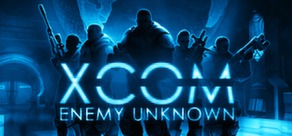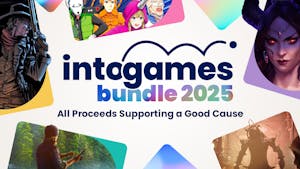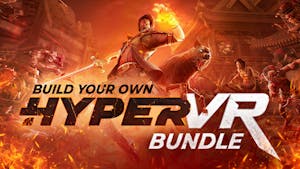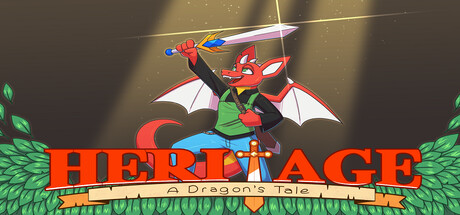Recent Steam Deck Verification Changes
new
Release date:April 2026
rumor
Detected a blank/encrypted linux depot (3845302)
new
Release date:Coming soon
rumor
Detected a blank/encrypted linux depot (3854063)
new
Release date:2025-07-28
rumor
Detected a blank/encrypted linux depot (3438842)
rumor
Heritage - A Dragon's Tale
Detected a blank/encrypted linux depot (3087901)
new
Release date:2024-11-01
rumor
Detected a blank/encrypted linux depot (2853872)
news
Surprise! Linux Release!
rumor
Detected a blank/encrypted linux depot (3139583)
rumor
Detected a blank/encrypted linux depot (2967933)
rumor
Detected a blank/encrypted linux depot (4112632)
new
Release date:To be announced
rumor
Detected a blank/encrypted linux depot (3415084)
rumor
Detected a blank/encrypted linux depot (2282202)
new
Release date:Coming soon
rumor
Super Ledgehop: Double Laser
Detected a blank/encrypted linux depot (787072)
new
Release date:2018-11-16
rumor
(632135) depot was deleted
rumor
Set 'N Det Linux (632131) depot was deleted
rumor
Detected a blank/encrypted linux depot (3896934)
rumor
Detected a blank/encrypted linux depot (2127312)
news
Playtest Waitlist Now Open
rumor
Detected a blank/encrypted linux depot (632138)
rumor
Seedbo And That Time The Sun Exploded
Detected a blank/encrypted linux depot (3321363)
new
Release date:2023-08-28
rumor
Detected a blank/encrypted linux depot (3531161)
rumor
Detected a blank/encrypted linux depot (3515713)
new
Release date:Coming soon
rumor
Detected a blank/encrypted linux depot (3790062)
rumor
1 Trillion Credits In Debt
Detected a blank/encrypted linux depot (4094443)
rumor
Detected a blank/encrypted linux depot (4127143)
rumor
Detected a blank/encrypted linux depot (3461512)
new
Release date:2025-12-24
rumor
Detected a blank/encrypted linux depot (2305992)
news
Bug Bait v.1.0 Release!!
steamdeck
New Playable game!
steamdeck
Superhero Simulator changed it's category from Playable to Unsupported!
steamdeck
New Verified game!
steamdeck
New Playable game!
rumor
Long Live The Queen - Shared steam integ ...
Long Live The Queen - Shared steam integration (251994) depot was deleted
new
Release date:To be announced
rumor
Detected a blank/encrypted linux depot (3916542)
new
Release date:2025-10-17
rumor
Detected a blank/encrypted linux depot (4036302)
steamdeck
New Unsupported game!
steamdeck
Sandboxels changed it's category from Playable to Unsupported!
steamdeck
New Playable game!
steamdeck
New Unsupported game!
steamdeck
Let Them Come Onslaught changed it's category from Playable to Verified!
steamdeck
Westland Survival changed it's category from Playable to Verified!
rumor
Detected a blank/encrypted linux depot (1423052)
rumor
Detected a blank/encrypted linux depot (1423055)
rumor
Detected a blank/encrypted linux depot (3529562)
rumor
Detected a blank/encrypted linux depot (3873443)
rumor
Detected a blank/encrypted linux depot (2499132)
rumor
(3875893) depot was deleted
steamdeck
New Playable game!
steamdeck
New Playable game!
steamdeck
New Playable game!
steamdeck
New Playable game!
steamdeck
New Playable game!
steamdeck
New Playable game!
steamdeck
New Verified game!
steamdeck
New Playable game!
steamdeck
New Playable game!
steamdeck
New Playable game!
steamdeck
New Playable game!
steamdeck
New Verified game!
steamdeck
New Verified game!
steamdeck
Fresh Story 2 changed it's category from Playable to Verified!
steamdeck
DATING OF THE FUTURE changed it's category from Unsupported to Verified!
steamdeck
New Playable game!
steamdeck
New Playable game!
steamdeck
New Playable game!
rumor
Detected a blank/encrypted linux depot (2896351)
rumor
Detected a blank/encrypted linux depot (2896352)
rumor
Detected a blank/encrypted linux depot (2896353)
new
Release date:2025-07-29
rumor
Detected a blank/encrypted linux depot (4043891)
new
Release date:Coming soon
rumor
Detected a blank/encrypted linux depot (1154142)
new
Release date:To be announced
rumor
Detected a blank/encrypted linux depot (4160023)
rumor
Detected a blank/encrypted linux depot (3857123)
news
Heritage Patch v1.1.36.1586 is Live!
new
Release date:January 2026
rumor
Detected a blank/encrypted linux depot (3768452)
rumor
Detected a blank/encrypted linux depot (3565334)

25.19$ (16%)

0.69$ (92%)

24.59$ (18%)

8.78$ (12%)

1.87$ (88%)

9.60$ (84%)

7.76$ (87%)

2.36$ (84%)

3.57$ (55%)

6.73$ (78%)

8.74$ (56%)

3.47$ (77%)

7.97$ (80%)

3.93$ (21%)

2.51$ (87%)

17.79$ (11%)

8.78$ (78%)

5.27$ (91%)

4.48$ (78%)

4.65$ (53%)

4.73$ (84%)

8.39$ (16%)

5.14$ (83%)

16.57$ (17%)

2.36$ (84%)

3.71$ (88%)

16.34$ (18%)

4.00$ (80%)

19.59$ (22%)

1.31$ (91%)

57.39$ (18%)

25.99$ (35%)

1.99$ (80%)

53.99$ (46%)

23.84$ (47%)

3.99$ (50%)

44.09$ (37%)

13.74$ (73%)

9.99$ (50%)

26.39$ (67%)

17.99$ (40%)

25.99$ (35%)

33.99$ (15%)

12.99$ (35%)

35.99$ (28%)

10.99$ (45%)

1.53$ (78%)

6.47$ (91%)

23.99$ (60%)

3.59$ (82%)

4.29$ (79%)

24.99$ (50%)

32.19$ (54%)

3.99$ (80%)

3.59$ (92%)

13.99$ (60%)

15.89$ (21%)

2.09$ (65%)

1.49$ (90%)

8.99$ (78%)

1.5$ (92%)

1.88$ (62%)

2.5$ (75%)

1.91$ (87%)

4.83$ (86%)

7.2$ (64%)

3.4$ (83%)

0.94$ (81%)

0.69$ (86%)

0.56$ (81%)

1.5$ (81%)

9.37$ (63%)

3.75$ (75%)

9.0$ (70%)

4.14$ (86%)

9.0$ (77%)

3.75$ (75%)

1.6$ (80%)

9.37$ (63%)

3.0$ (90%)

1.28$ (91%)

0.56$ (81%)

9.37$ (63%)

2.25$ (77%)

0.56$ (81%)

16.0$ (60%)

10.0$ (75%)

3.83$ (74%)

14.4$ (64%)

9.99$ (50%)

2.79$ (60%)

2.24$ (85%)

3.99$ (80%)

17.19$ (75%)

7.49$ (75%)

2.54$ (87%)

12.49$ (75%)

4.98$ (75%)

13.99$ (22%)

17.49$ (50%)

1.99$ (85%)

9.59$ (84%)

73.99$ (8%)

1.49$ (94%)

7.49$ (75%)

2.79$ (60%)

1.04$ (85%)

2.99$ (85%)

0.99$ (75%)

2.49$ (75%)

1.89$ (87%)

6.99$ (80%)

1.59$ (68%)

4.49$ (85%)

1.19$ (76%)

1.49$ (90%)

3.39$ (66%)

1.49$ (85%)

1.19$ (88%)

1.19$ (88%)
FANATICAL BUNDLES

Time left:
356111 days, 6 hours, 26 minutes

Time left:
356111 days, 6 hours, 26 minutes

Time left:
6 days, 14 hours, 26 minutes

Time left:
15 days, 14 hours, 26 minutes

Time left:
43 days, 14 hours, 26 minutes

Time left:
46 days, 14 hours, 26 minutes

Time left:
47 days, 14 hours, 26 minutes
HUMBLE BUNDLES

Time left:
0 days, 8 hours, 26 minutes

Time left:
8 days, 8 hours, 26 minutes

Time left:
9 days, 8 hours, 26 minutes

Time left:
16 days, 8 hours, 26 minutes
by buying games/dlcs from affiliate links you are supporting tuxDB
🔴 LIVE


starlightlacuna
Software and Game Development
End of year hang out A bit of game dev, a bit of Minecraft !commands


kiriartemisvt
Software and Game Development
Weekday Morning Art/Dev Stream!


chloroken
EVE Online
This Wormhole Gas is so ~Instrumental~


proniss
Brighter Shores
Brighter Shores | Lots of Alch | Alt Grinding


cringer
RimWorld
!Cringey Awards day, RimWorld to start | !cringer !linux !ads


keyb1nd_
Software and Game Development
ABOUT TO LOSE ALL MY MONEY ON CRYPTO


jimbii
Ashes of Creation
Just have Fun... [FoL = Flower of Life] #Linux #Newb #FishStick


ramforth
Music
DRM Free radio || AI chatbot || Ad-free


towsive
DayZ
Dayz! Winter Chernarus! 40 follows by end of 2025?


carolineofmaine
Always On
Music, Mammoths and Gaming! classical, country, rock, techno, jazz, b...


techier0b
Wings of Vi
Will We Beat Wings of Vi before 2026?


artbenbeau
Pokmon Legends: Z-A
pokemon has too many types - LAST STREAM OF THE YEAR


cutieguwu
Software and Game Development
Coding an Optical Disk recovery util. Maybe some MC later?


mizukinagano
ANNO: Mutationem
(18+) This underground base goes way deeper than I thought...


thelinuxpleb
Kingdom Come: Deliverance
(Day 34) Kingdom Come Deliverance






































































































































